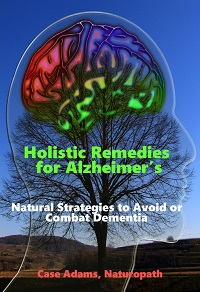Sitting Shortens Life, Ups Cancer Risk
A 2011 study from Canada has found that more sitting increases the risk of breast cancer among women. This study, led by researchers from the Alberta Health Services of Calgary, Canada, used the U.S. National Health and Nutrition Examination Survey of 2003-2006 to analyze the lifestyles of 1,024 elderly women.
They followed the activity levels of the women together with their length of sitting. They found that breast cancer incidence was highest amongst those women who sat the most each day, and that light physical exercise such as walking significantly decreased breast cancer incidence.
Other cancers are also caused by sedentary lifestyles. Researchers presenting at the Annual Research Conference on Food, Nutrition, Physical Activity and Cancer in Washington, have estimated that inactivity causes nearly 100,000 cancer cases each year in the United States.
Other studies have showed that sedentary lifestyles increase cardiovascular disease risk and early death.
In one of these – published in August of 2011 – researchers from Australia’s University of Queensland found that watching more television significantly decreased life expectancy. Using data from the Australian Bureau of Statistics and the Australian Diabetes, Obesity and Lifestyle Study, they calculated that every hour of television watched after the age of 25 years old reduces life expectancy by almost 22 minutes.
However, this study could not eliminate the relationship between more television viewing by those who were otherwise less healthy and more sedentary, and likely to suffer from cardiovascular diseases and cancer as a result of the increased lack of activity. So it may not be television in itself, but rather, the inactivity that takes place during television watching.
This notion is strengthened by a study published last year in the American Journal of Epidemiology by researchers from the American Cancer Society’s Epidemiology Research Program. This study followed 53,440 U.S. men and 69,776 U.S. women for fourteen years, and analyzed their daily sitting and physical activity times through questionnaire. During the fourteen years, 11,307 of the men died and 7,923 women died. After removing being overweight, smoking and other lifestyle and diet factors, the researchers found that death incidence was 94% higher among women and 48% greater among men who sat for more than or equal to six hours per day combined with lower levels of physical activity.
Most experts agree that light exercise, and getting up frequently when sitting to walk around or perform other motion-oriented tasks reduce the risks produced by sitting.
Sources:
Lynch BM, Friedenreich CM, Winkler EA, Healy GN, Vallance JK, Eakin EG, Owen N. Associations of objectively assessed physical activity and sedentary time with biomarkers of breast cancer risk in postmenopausal women: findings from NHANES (2003-2006). Breast Cancer Res Treat. 2011 Nov;130(1):183-94.
Patel AV, Bernstein L, Deka A, Feigelson HS, Campbell PT, Gapstur SM, Colditz GA, Thun MJ. Leisure time spent sitting in relation to total mortality in a prospective cohort of US adults. Am J Epidemiol. 2010 Aug 15;172(4):419-29.
Gardiner PA, Eakin EG, Healy GN, Owen N. Feasibility of reducing older adults’ sedentary time. Am J Prev Med. 2011 Aug;41(2):174-7. PubMed PMID: 21767725.
Gardiner PA, Healy GN, Eakin EG, Clark BK, Dunstan DW, Shaw JE, Zimmet PZ, Owen N. Associations between television viewing time and overall sitting time with the metabolic syndrome in older men and women: the Australian Diabetes, Obesity and Lifestyle study. J Am Geriatr Soc. 2011 May;59(5):788-96.
Lynch BM, Dunstan DW, Healy GN, Winkler E, Eakin E, Owen N. Objectively measured physical activity and sedentary time of breast cancer survivors, and associations with adiposity: findings from NHANES (2003-2006). Cancer Causes Control. 2010 Feb;21(2):283-8.















